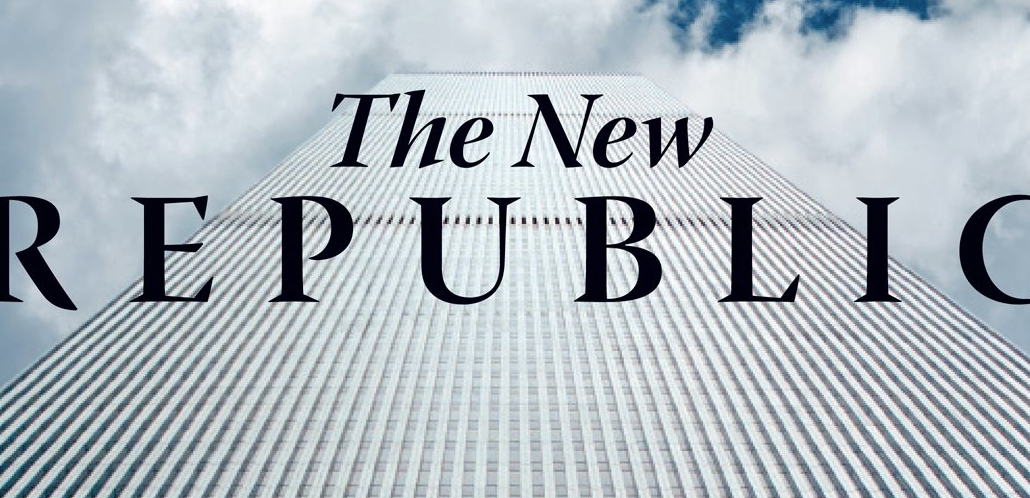Save 50% on a 3-month Digiday+ membership. Ends Dec 5.

It’s been two years since Facebook co-founder Chris Hughes acquired the New Republic, the Washington insider mag once described as “the in-flight magazine of Air Force One.” Since then, Hughes has helped march the 100-year-old publication further into the digital age with a new site design, mobile apps and, in general, an online presence that feels more at home on the Web today.
It hasn’t been an easy transition. New Republic readers are older, wealthy males knee-deep in Washington politics. Roughly 42,000 of them subscribe to the print magazine, which gets delivered to congressmen, senators and even the president himself. Such focused models are a natural fit to the hurly-burly of the Web.
“The audience that we have is a very targeted, influential group of people,” said Bob Brennan, New Republic director of sales and strategic partnerships. “That’s where a lot of advertisers want to be.”
The question for The New Republic, along with other niche publications, is how to translate an influence model to the Web, where scale reigns. That means a broader outlook, as evidenced by the New Republic’s newfound penchant for culture stories, like this one about television comedy “Broad City.” Stories about “The Bachelorette” and video game history sit next to those about the American Right and Airbnb. That’s the game the magazine has to play on the Web, which rewards light share-friendly content over 10,000-word investigations into Washington politics. That content schizophrenia creates a significant strategic conundrum: Writing about television shows may help boost the New Republic’s digital traffic numbers, but it also dilutes the brand that the magazine has spent the last 100 years building.
“Taking over an older publication with a brand like that is hard to do,” said Erik Requidan, director of sales at Intermarkets, which helps publishers market their ad inventory to buyers. “You have the old demo that you’re trying to convert and the new demo that you’re trying to capture.”
It’s an approach that’s had a sizable but ultimately limited, effect on the New Republic’s digital prospects. The site drew roughly 1 million unique desktop visits last month, per comScore. And while that’s a fivefold increase from two years ago, it’s a far cry from, say, fellow politics-focused publishers like The Atlantic, which draws as many as 5 million unique users a month.
“We’re struggling a bit to figure out where they fit within our business,” said Steve Carbone, managing director at MediaCom, which hasn’t had discussions with the New Republic since 2011. “We can get to that audience elsewhere more efficiently and in larger numbers. When you have a whole bunk of properties in front of you, they fall to the bottom,” he said.
“You don’t have to have a big audience, but then you have to be realistic about what your revenue expectations are,” added Requidan.
Ad position: web_incontent_pos1
It’s not a problem that’s unique to the New Republic. The digital media ecosystem is full of print publishers that have struggled to translate their legacy brands to the Web. But are also examples of brands that have made the transition well. Print publishers like The New Yorker and The Atlantic have all built significant digital footprints despite being forced to juggle their digital ambitions with their digital footprints. This, in the end, means that it’s still too early to count the New Republic out.
“This could be a publisher that we pay attention to in a year so,” Carbone said. “Right now, the way it fits within our mix, it wouldn’t be our most efficient partner.”
More in Media

What publishers are wishing for this holiday season: End AI scraping and determine AI-powered audience value
Publishers want a fair, structured, regulated AI environment and they also want to define what the next decade of audience metrics looks like.

Digiday+ Research Subscription Index 2025: Subscription strategies from Bloomberg, The New York Times, Vox and others
Digiday’s third annual Subscription Index examines and measures publishers’ subscription strategies to identify common approaches and key tactics among Bloomberg, The New York Times, Vox and others.

From lawsuits to lobbying: How publishers are fighting AI
We may be closing out 2025, but publishers aren’t retreating from the battle of AI search — some are escalating it, and they expect the fight to stretch deep into 2026.
Ad position: web_bfu

